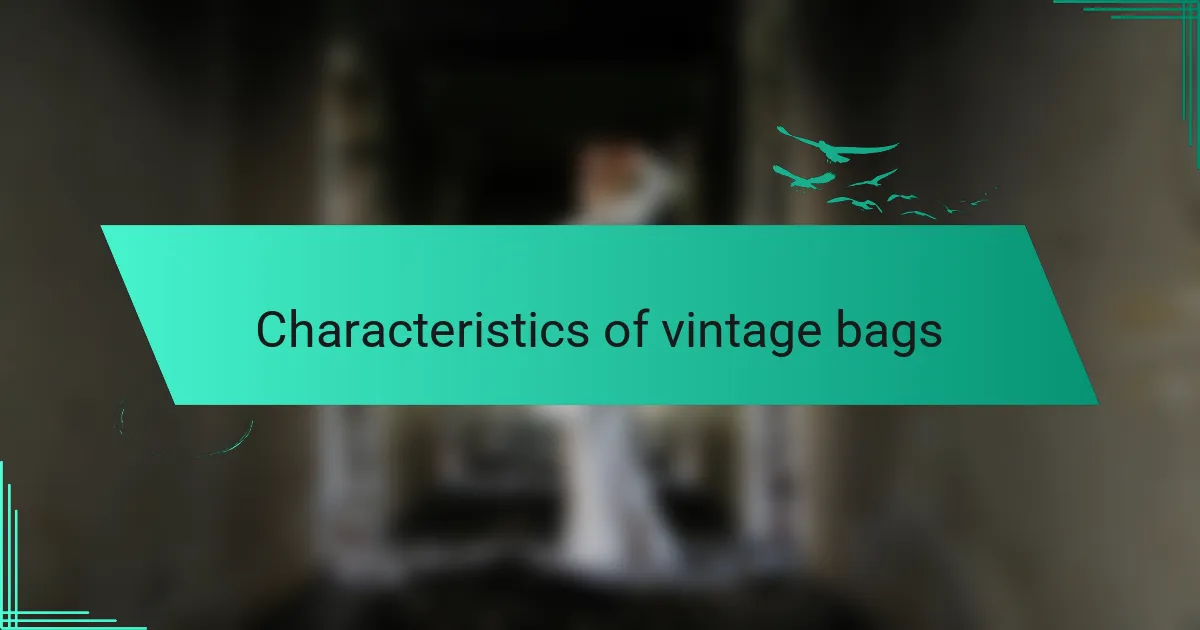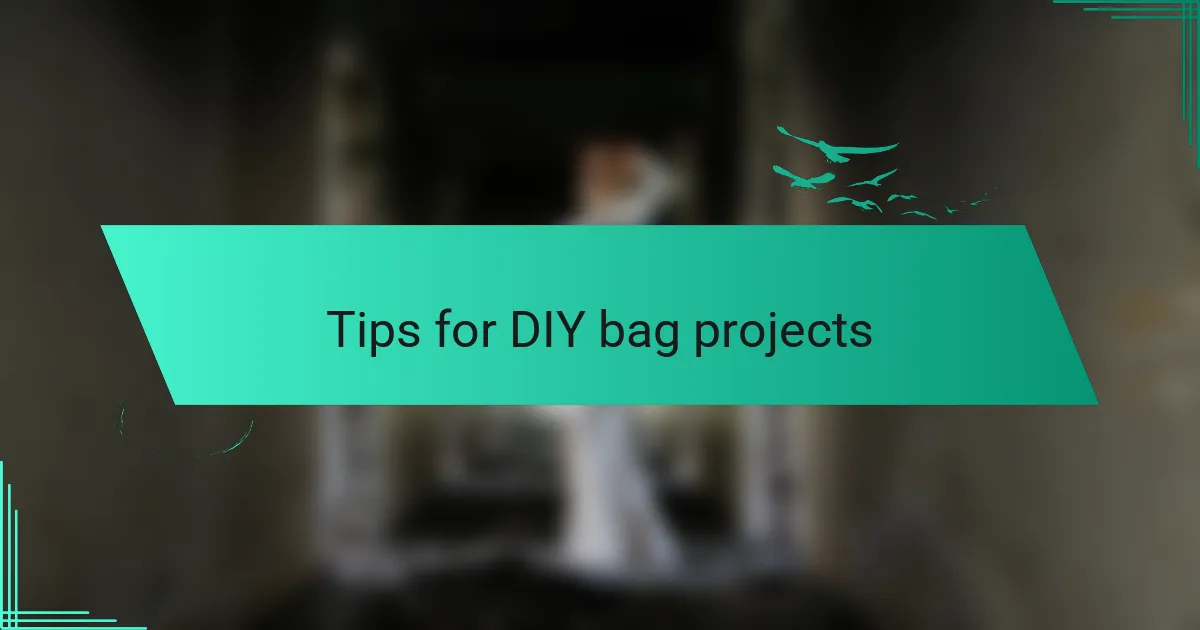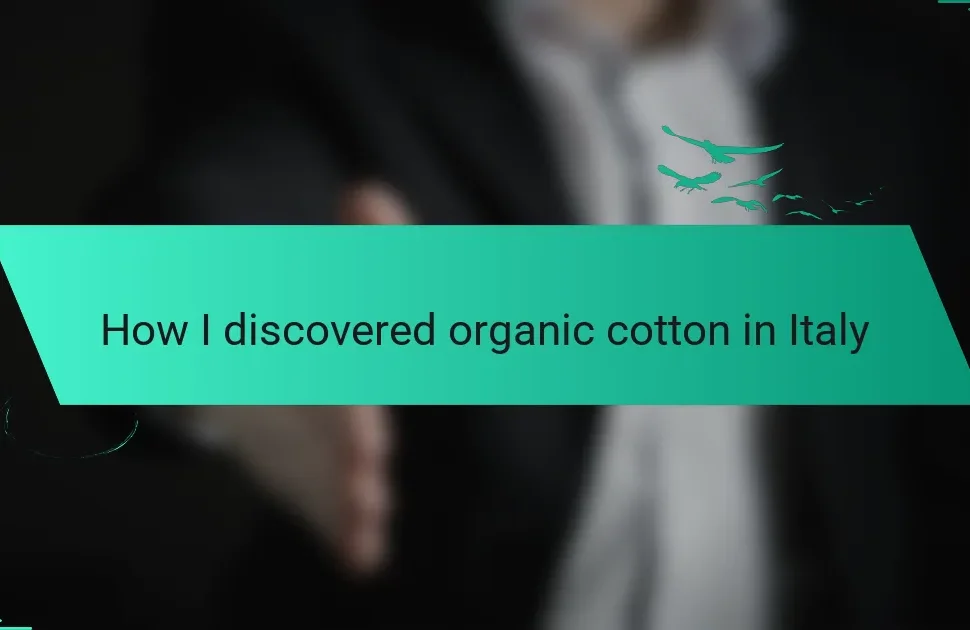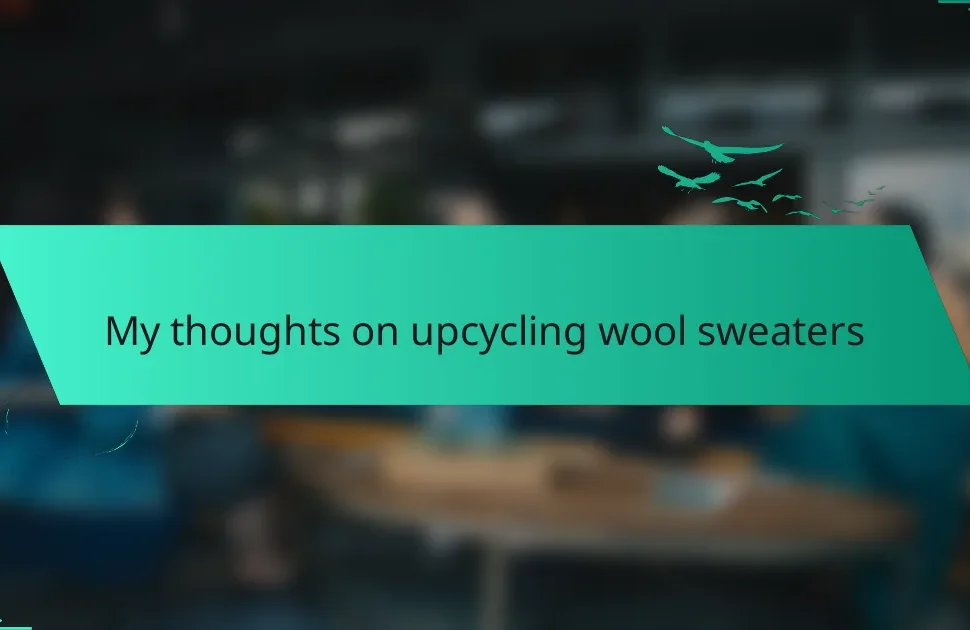Key takeaways
- Different types of canvas, such as cotton, duck cloth, and synthetic, offer unique benefits for various bag projects, influencing durability and style.
- Vintage bags are characterized by quality craftsmanship and timeless design, making them both functional and aesthetically pleasing.
- Prioritizing preparation and using the right tools enhances the DIY bag-making experience, leading to more successful outcomes.
- Each choice of canvas type impacts the final product’s look and functionality, allowing for personal expression through color and texture.

Understanding canvas types
When I first dove into choosing canvas for my bags, I quickly realized that not all canvas is created equal. The weight, texture, and finish can dramatically affect the look and feel of your project. I remember the excitement of choosing a durable cotton canvas for my classic tote, which not only held its shape beautifully but also felt great to the touch.
To give you a clearer picture, here’s a breakdown of the different types of canvas I encountered during my journey:
- Cotton Canvas: Soft and breathable, ideal for casual bags. I love its versatility!
- Duck Cloth: Heavier and more durable, perfect for projects that require sturdiness. I found it excellent for my outdoor gear.
- Synthetic Canvas: Water-resistant and easy to clean, a great choice for everyday use. I once used it for a beach bag and loved how it handled spills.
- Waxed Canvas: Offers a vintage look while being water-resistant. I was drawn to its richness and rustic charm.
- Linen Canvas: Lightweight and breathable with a bit of texture, great for a more refined bag. I made a small clutch out of it that felt timeless.
Exploring these options helped me appreciate the nuances in fabric choice, enhancing not only the aesthetic but also the functionality of my DIY bags.

Characteristics of vintage bags
Vintage bags possess a unique charm that sets them apart from modern designs. These bags often feature distinctive materials and textures, lending an artisanal feel that captures the essence of their time. I remember uncovering a vintage leather satchel with patina and character that spoke volumes about its past journeys. Isn’t it fascinating how these little stories can spark joy and nostalgia?
One prominent characteristic of vintage bags is their craftsmanship. Hand-stitched details and quality hardware have a way of showcasing the dedication put into making each piece. I often marvel at the intricate stitching on my favorite 1960s handbag. It’s as if every stitch tells a story of the skill and artistry behind it. Can anything be more appealing than knowing your bag is not just an accessory but a work of art?
Additionally, vintage bags tend to embody timeless styles that transcend trends. Many of them are designed with practical compartments and spacious interiors, making them not only beautiful but functional. I once used a vintage doctor’s bag for travel, and the organized space was a game-changer, blending style with utility. Isn’t it comforting to know that what was once the height of fashion can still serve us well today?

Benefits of using canvas
Choosing canvas for my bags came with a wealth of benefits that I absolutely cherish. One of the standout advantages is its durability. I’ve taken my canvas tote on countless adventures—grocery shopping, beach outings, and even hiking trips—and it has held up beautifully throughout. I often find myself asking, how can a material feel so sturdy while still being lightweight?
Another thing I appreciate about canvas is its versatility. You can find it in so many colors and prints, making it easy to match any style. When I was selecting fabric for my latest project, I stumbled upon a vibrant patterned canvas that instantly sparked my creativity. It reminded me that the possibilities are endless with this fabric!
Lastly, canvas bags tend to have that eco-friendly edge, especially when opting for cotton or recycled versions. It feels good to know that my choices can be sustainable. I often reflect on how each bag I create has a little less environmental impact, and that’s a rewarding feeling. Isn’t it nice to wear something that not only looks good but also aligns with our values?

Selecting the right canvas
Selecting the right canvas is about finding the perfect match for your project’s purpose and aesthetic. I remember standing in a fabric store, overwhelmed by the options, uncertain of what would work best for my next bag. It hit me that choosing a thick, durable cotton canvas for a rugged backpack would not only guarantee longevity but also complement the adventurous spirit I wanted my design to embody.
I’ve also learned that considering the texture can truly elevate the final product. While working on a vintage-inspired tote, I opted for a softer, linen canvas, which added a delicate touch to the overall look. It’s amazing how a simple choice in fabric can transform a bag from basic to uniquely stylish. I often think, isn’t it fascinating how the fabric we choose tells a story about our personal style?
Don’t overlook practicality either. During one of my projects, I used a synthetic canvas for a bag intended for daily use, and it changed my perceptions completely. The ease of cleaning and the water-resistant properties turned out to be game-changers. It made me realize that while style is important, functionality is equally vital for a bag that I would use every day. When selecting canvas, I encourage you to ask yourself: which attributes resonate most with your lifestyle?

My canvas choosing process
When I embarked on the journey of choosing canvas for my bags, I realized it was about more than just picking a color or texture; it was about finding fabric that resonated with my vintage aesthetic. I remember standing in the fabric store, feeling the samples, and imagining how each would transform into a functional yet stylish piece. The weight and durability of the canvas felt like a promise of longevity, something I truly value in vintage fashion.
As I compared different types of canvas fabrics, I focused on their weights and finishes. For me, a heavier canvas spoke of sturdiness, perfect for bags that would withstand everyday use. At the same time, the weight needed to balance with the vintage appeal—something lightweight might be awkward, while something too heavy could lose its charm.
Here’s a comparison of the different canvases I considered:
| Canvas Type | Weight (oz) |
|---|---|
| Lightweight Canvas | 6-8 oz |
| Midweight Canvas | 9-12 oz |
| Heavyweight Canvas | 13-16 oz |

Tips for DIY bag projects
When diving into DIY bag projects, I’ve discovered that preparation is key. One tip I always share is to plan your design before cutting any fabric. I remember the excitement I felt sketching out my ideas—it made the whole process smoother. Have you ever jumped in without a plan? It can lead to unexpected challenges, like wasting fabric or redoing stitches.
Another important aspect is choosing the right tools. I learned this the hard way when I used a dull rotary cutter for my bag project. The frustration I felt was palpable. Investing in high-quality tools not only enhances precision but also makes the crafting experience more enjoyable. A sharp tool can transform your work from a struggle into a joy.
Finally, don’t underestimate the power of personalization. Adding a unique touch, like embroidery or patches, can set your bag apart. I love drawing inspiration from my favorite vintage pieces and incorporating those elements into my designs. What’s more fulfilling than carrying a bag that reflects your personal story? Exploring these small details turned my simple bags into cherished pieces of art.

Final thoughts on my experience
Choosing the right canvas for my bags has truly been a journey. I learned that weight and texture significantly affect not just the bag’s look, but also its durability and functionality. The vibrant colors and patterns available have allowed me to express my unique style, making each project feel personal.
Through experimentation, I discovered that some canvases fray easily, while others maintain their integrity through multiple uses. My favorite, a sturdy and colorful cotton canvas, holds its shape beautifully and has become a staple in my DIY projects. Each piece I create tells a story, and the choice of canvas is at the heart of that narrative.
| Canvas Type | Durability |
|---|---|
| Cotton Canvas | High – retains shape, minimal fraying |
| Polyester Canvas | Very High – water-resistant, strong |
| Denim Canvas | Moderate – stylish, can fray |
| Linen Canvas | Low – more delicate, beautiful finish |




